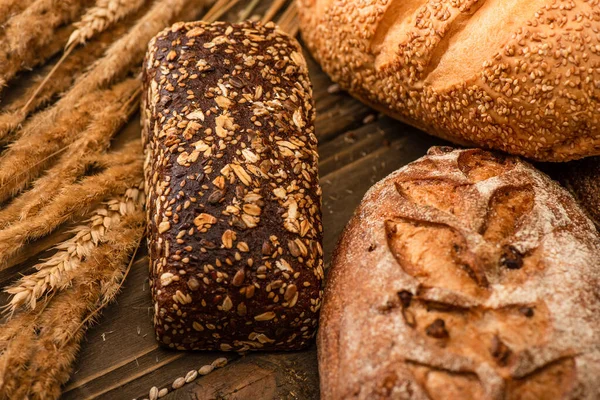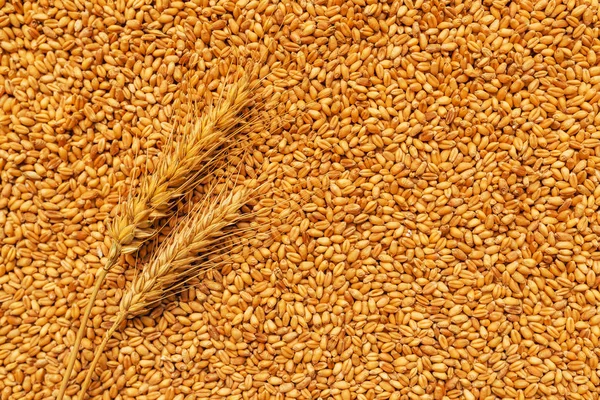Get to know “Is European Wheat More Tolerable than American Wheat?” In the vast and intricate world of grains, the debate over the tolerability of European Wheat versus its American counterpart has sparked considerable interest and discussion among experts and enthusiasts alike.
You’ve probably heard stories from people who say they can’t eat wheat in the U.S. but can eat it in Europe.

This rumored phenomenon has led many to believe there’s something wrong with U.S. wheat. Maybe it contains more gluten or chemicals or is processed differently? Whatever the case, many people blame U.S. wheat for the rise of celiac disease, wheat allergies, and gluten intolerance. As consumers become increasingly conscientious about the origin and quality of their food, delving into the nuances of wheat varieties becomes imperative.
The Culinary Odyssey: A Brief Overview
To embark on this gastronomic journey, one must first understand the unique characteristics that distinguish European Wheat from its transatlantic relative. European wheat, often praised for its robust flavor profile and distinct texture, is cultivated in the diverse climates of the European continent. Meanwhile, American wheat, cultivated across the vast expanses of the United States, offers its own set of qualities and culinary implications.
European Wheat: A Symphony of Terroir
European Wheat draws its distinct character from the diverse terroirs that span the continent. The interplay of soil composition, climate, and traditional cultivation practices results in a spectrum of wheat varieties, each with its own unique set of attributes. From the nutty nuances of French wheat to the earthy undertones of Italian varieties, the European landscape is a tapestry of flavors waiting to be explored.
In the realm of artisanal baking, the French T65 flour, renowned for its nuanced flavor and superior gluten structure, stands as a testament to the exquisite possibilities offered by European wheat. The intricate dance of minerals in the soil imparts a depth of flavor that elevates the most humble loaf to a culinary masterpiece.
American Wheat: The Breadbasket Legacy
Conversely, American Wheat boasts a rich legacy as the breadbasket of the world. The vast, fertile plains of the Midwest, primarily Kansas, have been the epicenter of wheat cultivation in the United States. Here, the hard red winter wheat reigns supreme, revered for its high protein content and exceptional baking qualities.
The American approach to wheat production is characterized by efficiency and scale, driven by the demands of a burgeoning population. This pragmatic approach has birthed wheat varieties that, while perhaps lacking the nuanced complexity of their European counterparts, excel in consistency and versatility.
Nutritional Faceoff: Breaking Down the Grains

Beyond the culinary realm, the debate over the tolerability of European Wheat versus American wheat extends to nutritional considerations. Understanding the distinct nutritional profiles of these grains is pivotal for those who view their diets through a health-centric lens.
European Wheat: A Nutrient-Rich Ensemble
European wheat, shaped by the mosaic of climates and cultivation practices, often boasts a nutrient profile that reflects the diversity of its origins. The incorporation of various grains, such as spelled and emmer, into the European wheat landscape contributes to a broader array of nutrients. These ancient grains, with their distinct nutritional virtues, add layers of complexity to the overall nutritional makeup.
Moreover, the emphasis on sustainable and organic farming practices prevalent in many European wheat-growing regions translates into a product that is not only rich in essential nutrients but also free from certain agricultural residues that can be of concern to health-conscious consumers.
READ RELATED: 10 Most Wasted Grocery Items In America, According to a New Survey
American Wheat: Pragmatism in Nutrition
In contrast, American wheat, with its emphasis on high-yield varieties and efficiency-driven cultivation, tends to prioritize certain nutritional aspects. The hard red winter wheat, a staple in American fields, is celebrated for its protein content, making it a preferred choice for bread and pasta production.
However, the streamlined approach to cultivation, while ensuring a reliable supply, may lead to a narrower spectrum of nutrients compared to the diverse offerings of European wheat. The trade-off between efficiency and nutritional complexity is a central theme in the discourse surrounding the tolerability of these wheat varieties.
The Gluten Conundrum: Unraveling the Debate
No discussion on wheat tolerability is complete without addressing the proverbial elephant in the room—gluten. Gluten, a complex mixture of proteins, plays a pivotal role in determining the texture and structure of baked goods. However, it has also become a focal point in the ongoing debate surrounding wheat intolerance and sensitivity.
European Wheat: A Gentler Gluten?
Proponents of European Wheat often argue that the gluten found in these varieties possesses a more delicate and digestible nature. The terroir-driven cultivation practices, they contend, result in gluten structures that may be less prone to triggering sensitivities. Additionally, the prevalence of ancient grains in European wheat blends introduces a diversity of proteins that can potentially make the overall gluten composition more tolerable for some individuals.
American Wheat: The Protein Powerhouse
Conversely, advocates for American wheat highlight the robust gluten structure of varieties like hard red winter wheat. This robustness, they argue, contributes to the desirable qualities in bread and pasta, but may pose challenges for those with gluten sensitivities. The higher protein content, while a boon for baking enthusiasts, has led some to question whether it contributes to the perceived intolerance associated with American wheat.
Beyond Borders: The Global Impact
The debate over the tolerability of European Wheat versus American wheat extends beyond individual preferences and nutritional considerations. It encompasses broader issues of sustainability, environmental impact, and global trade dynamics.
Sustainable Practices: A European Embrace
Europe, with its strong emphasis on sustainable farming practices and conservation, has positioned itself as a torchbearer for environmentally conscious agriculture. The integration of agroecological principles, such as crop rotation and polyculture, not only enhances the resilience of European wheat crops but also contributes to the overall ecological health of the regions where it is cultivated.
Agricultural Scale: The American Paradigm
On the other side of the Atlantic, the sheer scale of wheat production in the United States reflects a different paradigm. The efficiency-driven model, while ensuring a steady supply of wheat to meet global demands, raises questions about the environmental footprint of such large-scale monoculture. The use of agrochemicals and the impact on soil health are pivotal aspects that add layers to the debate over the tolerability of American wheat.
The Verdict: Navigating the Wheat Landscape
As we navigate the labyrinthine discourse on the tolerability of European Wheat versus American wheat, it becomes evident that the answer is not a simple binary. Individual preferences, culinary aspirations, and health considerations all contribute to shaping one’s stance in this ongoing debate.
The diverse terroirs of Europe yield a spectrum of flavors and textures that captivate the palate, while the pragmatic efficiency of American wheat ensures a reliable supply to meet global demands. Nutritional nuances, gluten complexities, and environmental considerations further add layers to this multifaceted discussion.
In the end, the choice between European and American wheat is not just a matter of taste or tolerance but a reflection of the values and priorities we hold dear. Whether one finds solace in the artisanal traditions of European boulangeries or embraces the pragmatism of American agribusiness, the wheat we choose to grace our tables becomes a statement—a statement about the kind of world we envision and the flavors we savor.








